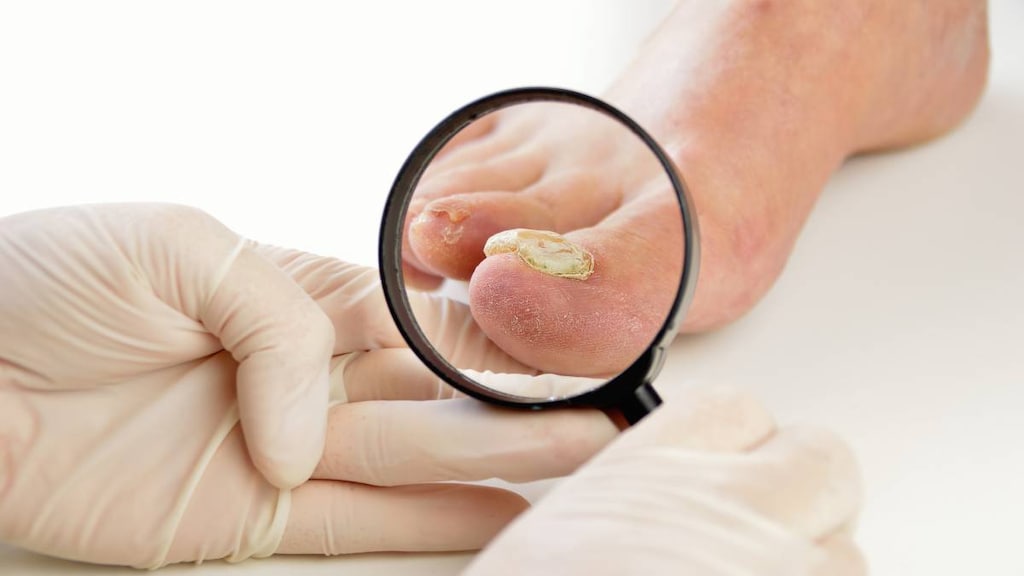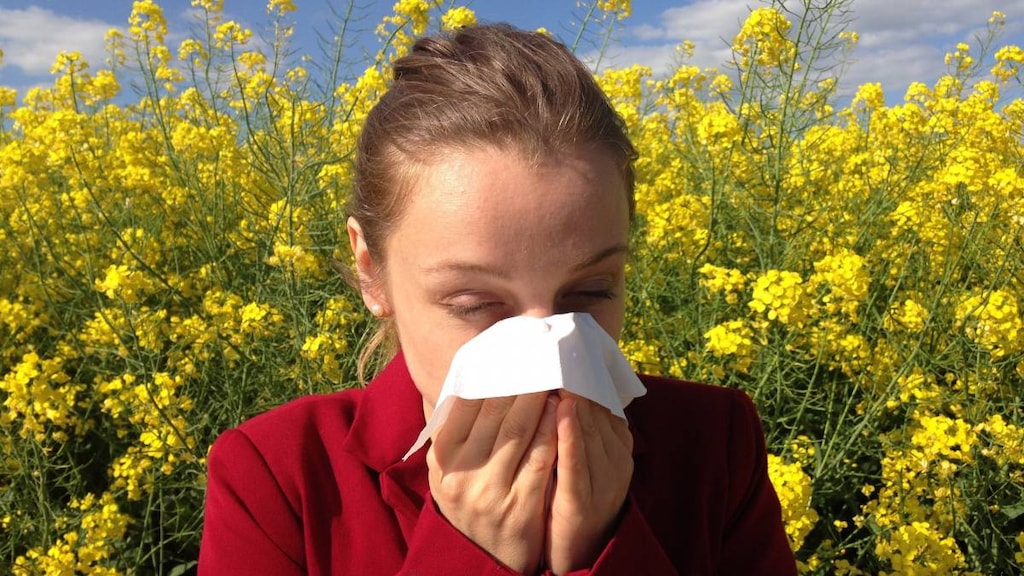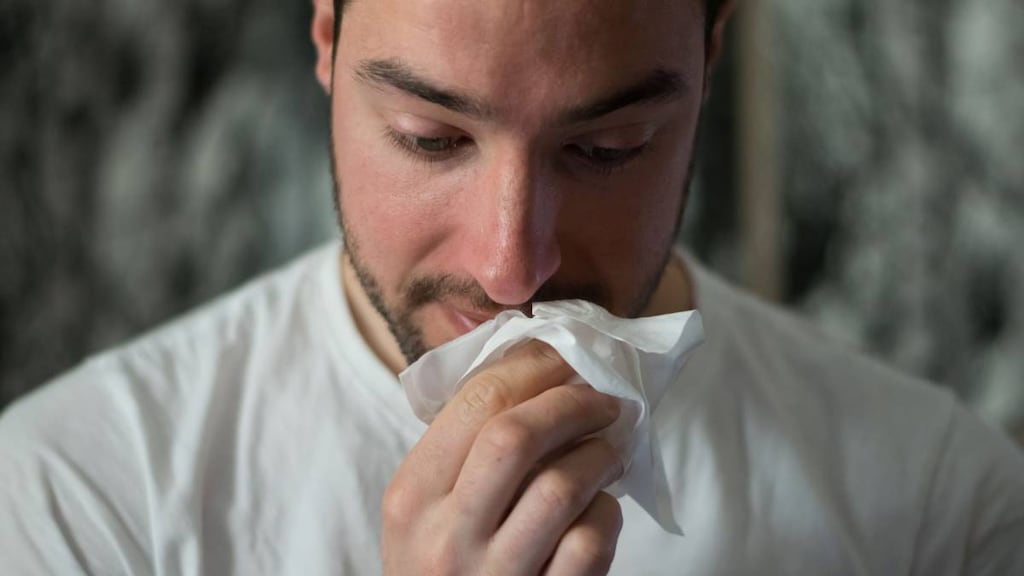Dosage Forms
Excipient information presented when available (limited, particularly for generics); consult specific product labeling. [DSC] = Discontinued product
Aerosol Solution, External, as acetonide:
Kenalog: 0.147 mg/g (63 g, 100 g)
Generic: 0.147 mg/g (63 g, 100 g)
Cream, External, as acetonide:
Triderm: 0.1% (28.4 g, 85.2 g); 0.5% (454 g) [contains propylene glycol]
Generic: 0.025% (15 g, 80 g, 453.6 g [DSC], 454 g); 0.1% (15 g, 30 g, 80 g, 453.6 g, 454 g); 0.5% (15 g)
Kit, External, as acetonide:
Dermasorb TA: 0.1% [DSC] [contains cetyl alcohol, milk protein, propylene glycol]
Pediaderm TA: 0.1% [DSC] [contains cetyl alcohol, methylparaben, polysorbate 80, propylene glycol, propylparaben]
Lotion, External, as acetonide:
Generic: 0.025% (60 mL); 0.1% (60 mL)
Ointment, External, as acetonide:
Trianex: 0.05% (430 g)
Generic: 0.025% (15 g, 80 g, 454 g); 0.05% (430 g); 0.1% (15 g, 30 g, 80 g, 453.6 g, 454 g); 0.5% (15 g)
Paste, Mouth/Throat, as acetonide:
Oralone: 0.1% (5 g)
Generic: 0.1% (5 g)
Therapy Pack, External, as acetonide:
Dermazone: 0.1% (1 ea [DSC]) [contains propylene glycol]
Sila III: 0.1% (1 ea)
SilaLite Pak: 0.1% (1 ea [DSC])
Pharmacology
Mechanism of Action
Topical corticosteroids have anti-inflammatory, antipruritic, and vasoconstrictive properties. May depress the formation, release, and activity of endogenous chemical mediators of inflammation (kinins, histamine, liposomal enzymes, prostaglandins) through the induction of phospholipase A2 inhibitory proteins (lipocortins) and sequential inhibition of the release of arachidonic acid. Triamcinolone has intermediate to high range potency (dosage-form dependent).
Pharmacokinetics/Pharmacodynamics
Absorption
Topical corticosteroids are absorbed percutaneously. The extent is dependent on several factors, including epidermal integrity (intact vs abraded skin), formulation, and the use of occlusive dressings.
Metabolism
Hepatic
Excretion
Urine (40%); feces (60%, some via biliary excretion)
Half-Life Elimination
Biologic: 18 to 36 hours
Use: Labeled Indications
Aphthous stomatitis: Oral/dental paste: Adjunctive treatment and temporary relief of symptoms associated with oral inflammatory and ulcerative lesions resulting from trauma.
Corticosteroid-responsive dermatoses (eg, atopic dermatitis, contact dermatitis, vulvar dermatitis, psoriasis, seborrheic dermatitis): Topical: Relief of inflammatory and pruritic manifestations of corticosteroid-responsive dermatoses.
Use: Off Label
Stasis dermatitisc
Clinical experience suggests the utility of topical triamcinolone (a mid- or high-potency formulation) in the management of stasis dermatitis Fransway 2019.
Contraindications
Hypersensitivity to triamcinolone or any component of the formulation
Oral topical formulations only: Fungal, viral, or bacterial infections of the mouth or throat
Dosage and Administration
Dosing: Adult
Note:
Potency: The potency classifications of topical triamcinolone products are provided in the table. In general, start with the lowest-potency agent appropriate for the condition severity and application site. Vehicle, concentration, site of application, use of occlusive dressings, and other factors can alter potency:
|
Vehicle |
Strength |
Potency (According to the US Classification System) |
|---|---|---|
|
1Goldstein 2019; Tadicherla 2009 |
||
|
Cream, Ointment |
0.5% |
High (group 3) |
|
Aerosol spray |
(delivering ~0.2 mg per 2-second spray) |
Medium (group 4) |
|
Cream, Ointment, Oral/Dental Paste |
0.1% |
Medium (group 4) |
|
Ointment |
0.05% |
Medium (group 4) |
|
Lotion |
0.1% |
Lower-mid (group 5) |
|
Ointment |
0.025% |
Lower-mid (group 5) |
|
Cream, Lotion |
0.025% |
Low (group 6) |
Table has been converted to the following text.
Potency according to the US Classification System:
Cream, ointment: 0.5%: High (group 3)
Aerosol spray (delivering ~0.2 mg per 2-second spray): Medium (group 4)
Cream, ointment, oral/dental paste: 0.1%: Medium (group 4)
Ointment: 0.05%: Medium (group 4)
Lotion: 0.1%: Lower-mid (group 5)
Ointment: 0.025%: Lower-mid (group 5)
Cream, lotion: 0.025%: Low (group 6)
1Goldstein 2019; Tadicherla 2009
In the management of corticosteroid-responsive dermatoses, lower-potency agents are often preferred for sites at increased risk for corticosteroid-induced skin atrophy (eg, face, intertriginous areas). However, use of higher-potency agents in these areas can be appropriate for certain indications when prescribed under the guidance of a dermatologist.
Vehicle:Optimal response depends on choosing a vehicle that is appropriate for body location and lesion characteristics, as well as consideration of patient preference.
Frequency of application: Corticosteroid-responsive dermatoses: Usual: Once or twice daily.
Duration of therapy: Corticosteroid-responsive dermatoses: Topical corticosteroids are generally well tolerated when used appropriately. Treatment courses of ~2 weeks are common; however, longer courses of treatment or repeated intermittent courses can be appropriate, particularly when prescribed under the guidance of a dermatologist. Conversely, a shorter course may be sufficient depending upon response and when used for minor self-limiting skin conditions (Drake 1996; Goldstein 2019; Tadicherla 2009).
Indication-specific dosing:
Aphthous stomatitis (recurrent), mild to moderate: Note: Initiate at first indication of an outbreak.
Triamcinolone 0.1% (oral/dental paste): Topical: Apply a small amount to the lesion 2 to 4 times daily until healed; do not rinse afterwards and avoid eating or drinking for 30 minutes after application (Altenburg 2014; McBride 2000; Taylor 2014).
Atopic dermatitis (eczema): Note: Concurrent use of emollients (applied liberally) is recommended.
Mild disease: Triamcinolone 0.025% (ointment, cream, lotion) or 0.1% (lotion): Topical: Apply once or twice daily to affected areas for 2 to 4 weeks (Buys 2007; Weston 2019).
Moderate to severe disease: Triamcinolone 0.05% (ointment), 0.1% (ointment, cream), ~0.2 mg/spray (aerosol spray), or 0.5% (ointment, cream): Topical: Apply once or twice daily to affected areas for 2 to 4 weeks (Hoare 2000; Weston 2019); in patients with improvement, maintenance therapy is suggested with an intermittent application once daily for 2 consecutive days per week (eg, weekends) or 2 to 3 times per week to previously affected areas for up to 16 weeks. Note: For areas affecting the face, groin, or other areas with skin folds, lower-potency preparations are generally recommended (unless limited to short-term use [5 to 7 days] and then switched to lower potency) (Eichenfield 2014; Weston 2019).
Contact dermatitis: Note: If condition does not show prompt improvement (eg, within 1 to 2 weeks), reassess diagnosis and choice of treatment; consider evaluation by an experienced specialist (AAAAI/ACAAI 2006).
Allergic contact dermatitis (localized), mild to moderate:
Face and/or flexural areas: Triamcinolone: 0.025% (cream, lotion, ointment), 0.05% (ointment), 0.1% (cream, lotion, ointment): Topical: Apply once or twice daily to affected areas for 1 to 2 weeks (Brod 2019).
Hands, feet, or nonflexural areas: Triamcinolone 0.5% (cream, ointment): Topical: Apply once or twice daily to affected areas for 2 to 4 weeks, or until resolution of symptoms (Brod 2019).
Irritant contact dermatitis (localized), mild to moderate, acute or chronic: Note: In general, ointments are the preferred vehicle.
Face and/or flexural areas: Triamcinolone 0.025% (cream, lotion, ointment) or 0.1% (lotion): Topical: Apply once or twice daily to affected areas for 1 to 2 weeks (Brod 2019).
Nonfacial and/or nonflexural areas: Triamcinolone 0.5% (cream, ointment): Topical: Apply once or twice daily to affected areas for 2 to 4 weeks (Brod 2019).
Genital pruritus (due to dermatitis) (adjunct): Note: Use with conservative measures (eg, keeping area clean and dry, removal of offending agents). An evaluation for the underlying cause is essential as the etiology may be due to an infectious, neoplastic, systemic, or other process requiring definitive management.
Vulvar dermatitis, mild: Triamcinolone 0.025% (cream, ointment, lotion), 0.05% (ointment), or 0.1% (cream, ointment, lotion): Topical: Apply to affected area once or twice daily for 2 to 4 weeks; therapy can be continued indefinitely at the minimum frequency for effective control of pruritus (goal <14 days per month). Ointments are preferred (Johnson 2019; Savas 2018; van der Meijden 2017).
Psoriasis, plaque (limited disease):
Face and/or intertriginous areas: Triamcinolone 0.025% (cream, lotion): Topical: Apply twice daily until lesions resolve; a common treatment course is 2 weeks (Feldman 2019; Samarasekera 2013).
Seborrheic dermatitis: Note: Administer alone or in combination with a topical antifungal.
Face, trunk, and/or intertriginous areas: Triamcinolone 0.025% (cream, lotion): Topical: Apply once or twice daily until symptoms subside (usually 1 to 2 weeks) (Sasseville 2019).
Chest or upper back: Triamcinolone 0.05% (ointment), 0.1% (cream, ointment), or ~0.2 mg/spray (aerosol spray): Topical: Apply once or twice daily until symptoms subside (usually 1 to 2 weeks) (Sasseville 2019).
Stasis dermatitis (off-label use): Triamcinolone 0.1% (ointment) or 0.5% (ointment): Topical: Apply once or twice daily for 1 to 2 weeks; due to risk of skin atrophy and ulceration, avoid prolonged use (Fransway 2019).
Dosing: Geriatric
Refer to adult dosing. Use the lowest effective dose.
Dosing: Pediatric
Note: Dosage should be based on severity of disease and patient response; use smallest amount for shortest period of time to avoid HPA axis suppression. Therapy should be discontinued when control is achieved.
Dermatoses (corticosteroid-responsive, including contact/atopic dermatitis): Infants, Children, and Adolescents: Topical:
Cream, Ointment:
0.025% or 0.05%: Apply thin film to affected areas 2 to 4 times daily
0.1% or 0.5%: Apply thin film to affected areas 2 to 3 times daily
Lotion: 0.025% or 0.1%: Apply 3 to 4 times daily
Spray: Apply to affected area up to 3 to 4 times daily
Administration
Oral/dental paste: Do not apply paste to skin or eyes. Apply small amount into oral cavity until thin, smooth film develops; do not rub in; spreading the paste may result in a granular, gritty sensation and crumbling; apply at bedtime to allow contact of the medication with the lesion overnight; if more frequent application is necessary, apply after meals.
Topical products: In general, for optimal absorption, apply topical corticosteroids to moist skin immediately after bathing or after wet soaks. Occlusive dressings will also enhance drug absorption, often by a factor of 10 (Goldstein 2019). Occlusive dressing may be used if instructed by a health care professional.
Aerosol spray: For external use only. Avoid heat, flame, or smoking when using. Avoid eyes and do not inhale if spraying near face. Container may be used upright or inverted. When using the spray button, spray at a distance of 3 to 6 inches from affected area. For hard-to-reach areas, insert the spray tube applicator into spray button and twist to seat. Point tube end away from body and face. Ensure the tube applicator is clean prior to use and wash after use. Move spray tube while applying, touching the surface of the affected area.
Cream, ointment, lotion: For external use only; avoid contact with eyes.
Storage
Cream, ointment: Store at 20°C to 25°C (68°F to 77°F).
Lotion, oral paste: Store at 20°C to 25°C (68°F to 77°F). Do not freeze.
Aerosol spray: Store at room temperature; avoid excessive heat. Do not puncture or incinerate.
Drug Interactions
Aldesleukin: Corticosteroids may diminish the antineoplastic effect of Aldesleukin. Avoid combination
Corticorelin: Corticosteroids may diminish the therapeutic effect of Corticorelin. Specifically, the plasma ACTH response to corticorelin may be blunted by recent or current corticosteroid therapy. Monitor therapy
Deferasirox: Corticosteroids may enhance the adverse/toxic effect of Deferasirox. Specifically, the risk for GI ulceration/irritation or GI bleeding may be increased. Monitor therapy
Hyaluronidase: Corticosteroids may diminish the therapeutic effect of Hyaluronidase. Management: Patients receiving corticosteroids (particularly at larger doses) may not experience the desired clinical response to standard doses of hyaluronidase. Larger doses of hyaluronidase may be required. Consider therapy modification
Ritodrine: Corticosteroids may enhance the adverse/toxic effect of Ritodrine. Monitor therapy
Adverse Reactions
Reactions listed are based on reports for other agents in this same pharmacologic class and may not be specifically reported for topical triamcinolone.
Frequency not defined:
Dermatologic: Acneiform eruption, allergic contact dermatitis, atrophic striae, desquamation, folliculitis, hypertrichosis, hypopigmentation, local dryness, maceration of the skin, miliaria, perioral dermatitis, skin atrophy, skin blister
Endocrine & metabolic: Cushing syndrome, glycosuria, HPA-axis suppression, hyperglycemia
Gastrointestinal: Oral mucosa changes (paste; atrophy or maceration)
Infection: Secondary infection
Local: Application site burning, application site irritation, application site pruritus
Warnings/Precautions
Concerns related to adverse effects:
- Adrenal suppression: May cause hypercortisolism or suppression of hypothalamic-pituitary-adrenal (HPA) axis, particularly in younger children or in patients receiving high doses for prolonged periods. HPA axis suppression may lead to adrenal crisis.
- Immunosuppression: Prolonged use may result in fungal or bacterial superinfection; discontinue if dermatological infection persists despite appropriate antimicrobial therapy.
- Sensitization: Topical use has been associated with local sensitization (redness, irritation); discontinue if sensitization is noted.
- Systemic effects: Topical corticosteroids may be absorbed percutaneously. Absorption may cause manifestations of Cushing syndrome, hyperglycemia, or glycosuria. Absorption is increased by the use of occlusive dressings, application to denuded skin, or application to large surface areas.
Concurrent drug therapy issues:
- Drug-drug interactions: Potentially significant interactions may exist, requiring dose or frequency adjustment, additional monitoring, and/or selection of alternative therapy. Consult drug interactions database for more detailed information
Special populations:
- Elderly: Because of the risk of adverse effects associated with systemic absorption, topical corticosteroids should be used cautiously in the elderly in the smallest possible effective dose for the shortest duration.
- Pediatric: Children may absorb proportionally larger amounts after topical application and may be more prone to systemic effects. HPA axis suppression, intracranial hypertension, and Cushing syndrome have been reported in children receiving topical corticosteroids. Prolonged use may affect growth velocity; growth should be routinely monitored in pediatric patients.
Dosage form specific issues:
- Administration: Aerosol solution: Do not apply to underarms or groin unless directed by a health care professional; if improvement is not seen within 2 weeks, contact prescriber. Product is flammable; avoid heat, smoking, or flames when applying.
- Polysorbate 80: Some dosage forms may contain polysorbate 80 (also known as Tweens). Hypersensitivity reactions, usually a delayed reaction, have been reported following exposure to pharmaceutical products containing polysorbate 80 in certain individuals (Isaksson 2002; Lucente 2000; Shelley 1995). Thrombocytopenia, ascites, pulmonary deterioration, and renal and hepatic failure have been reported in premature neonates after receiving parenteral products containing polysorbate 80 (Alade 1986; CDC 1984). See manufacturer’s labeling.
Other warnings/precautions:
- Appropriate use: For external use only; avoid contact with eyes. Do not use occlusive dressings on weeping or exudative lesions and general caution with occlusive dressings should be observed; discontinue if skin irritation or contact dermatitis should occur; do not use in patients with decreased skin circulation.
- High-potency products: Avoid the use of high-potency steroids on the face.
- Oral cavity application: Do not apply paste to skin or eyes. When used as a topical agent in the oral cavity, if significant regeneration or repair of oral tissues has not occurred in seven days, re-evaluation of the etiology of the oral lesion is advised.
Monitoring Parameters
Skin atrophy; HPA axis suppression. When used in the oral cavity (topical paste), if significant regeneration or repair of oral tissues has not occurred in seven days, re-evaluation of the etiology of the oral lesion is advised.
Pregnancy
Pregnancy Risk Factor
C
Pregnancy Considerations
Adverse events have been observed in some animal reproduction studies. Systemic bioavailability of topical corticosteroids is variable (integrity of skin, use of occlusion, etc.) and may be further influenced by trimester of pregnancy (Chi 2017). In general, the use of topical corticosteroids is not associated with a significant risk of adverse pregnancy outcomes. However, there may be an increased risk of low birth weight infants following maternal use of potent or very potent topical products, especially in high doses. Use of mild to moderate potency topical corticosteroids is preferred in pregnant females and the use of large amounts or use for prolonged periods of time should be avoided (Chi 2016; Chi 2017; Murase 2014). Also avoid areas of high percutaneous absorption (Chi 2017). The risk of stretch marks may be increased with use of topical corticosteroids (Murase 2014).
Patient Education
What is this drug used for?
All skin products:
- It is used to treat skin irritation.
- It is used to treat skin rashes.
Oral paste:
- It is used to treat mouth irritation.
Frequently reported side effects of this drug
- Burning
- Itching
- Dry skin
Other side effects of this drug: Talk with your doctor right away if you have any of these signs of:
- High blood sugar like confusion, fatigue, increased thirst, increased hunger, passing a lot of urine, flushing, fast breathing, or breath that smells like fruit
- Skin changes like pimples, stretch marks, slow healing, or hair growth
- Adrenal gland problems like severe nausea, vomiting, severe dizziness, passing out, muscle weakness, severe fatigue, mood changes, lack of appetite, or weight loss
- Cushing syndrome like weight gain in upper back or abdomen; moon face; severe headache; or slow healing
- Severe mouth irritation
- Skin irritation
- Skin discoloration
- Skin thinning
- Signs of a significant reaction like wheezing; chest tightness; fever; itching; bad cough; blue skin color; seizures; or swelling of face, lips, tongue, or throat.
Note: This is not a comprehensive list of all side effects. Talk to your doctor if you have questions.
Consumer Information Use and Disclaimer: This information should not be used to decide whether or not to take this medicine or any other medicine. Only the healthcare provider has the knowledge and training to decide which medicines are right for a specific patient. This information does not endorse any medicine as safe, effective, or approved for treating any patient or health condition. This is only a brief summary of general information about this medicine. It does NOT include all information about the possible uses, directions, warnings, precautions, interactions, adverse effects, or risks that may apply to this medicine. This information is not specific medical advice and does not replace information you receive from the healthcare provider. You must talk with the healthcare provider for complete information about the risks and benefits of using this medicine.




